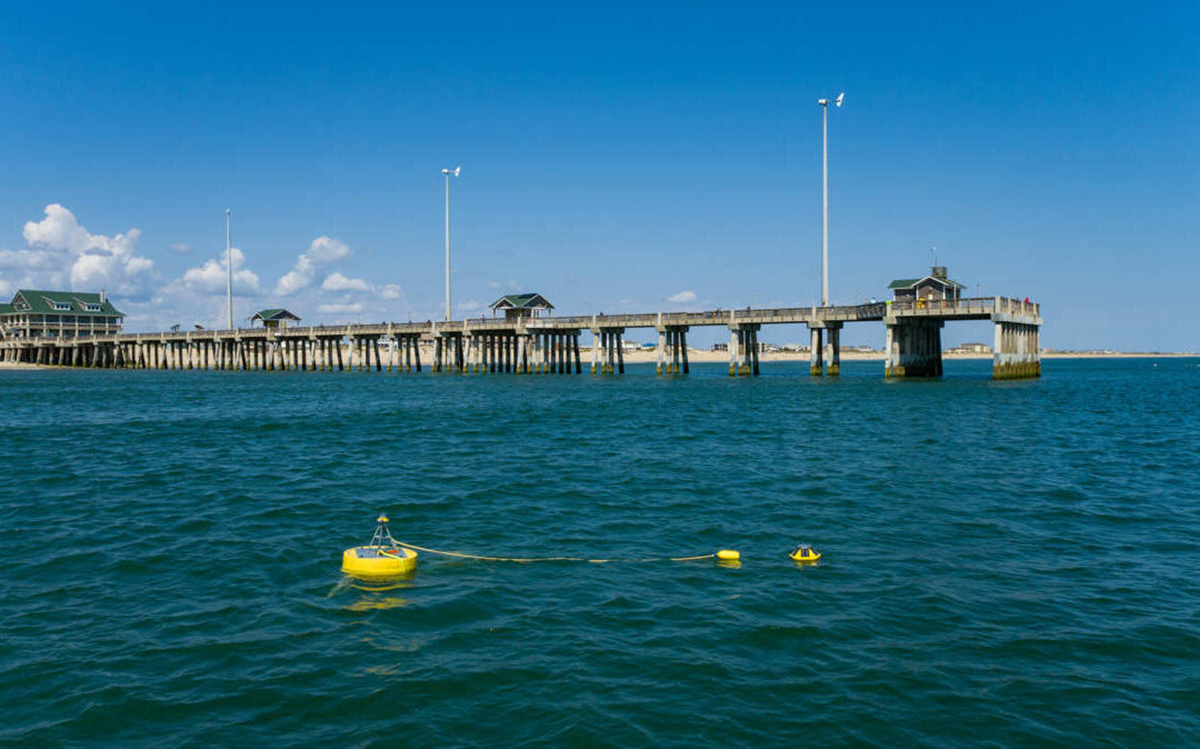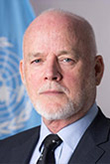
This is part of a series of special reports by Catherine Kozak, who attended the COP26 climate conference held in November.
WANCHESE — At the start of year two of the United Nations’ Decade of the Ocean, the Coastal Studies Institute on the Outer Banks has merged into the emerging blue economy as part of a global scientific collaborative to harness the power of waves, currents and tides.
Supporter Spotlight
The Coastal Studies Institute, an outpost of the North Carolina university system renowned for its innovative coastal science, is partnered with three other East Coast academic institutions in the new Atlantic Marine Energy Center, or AMEC, one of only four National Marine Renewable Energy Centers in the country.

Although the new center is still being organized, it was officially announced in November. That’s about the same time that Scotland was hosting the 26th session of the Conference of the Parties, better known as the U.N. climate conference or COP26, which included the blue economy as a critical approach towards mitigating climate change impacts.
With its mission to support and expand sustainable renewable ocean energy, AMEC will focus on research and development.
“Us being part of that group, I think, really identifies us as a leader in the U.S. with advancing marine energy,” George Bonner, director of the North Carolina Renewable Ocean Energy Program at the Coastal Studies Institute, said in a recent interview.
Led by the University of New Hampshire, the partnership was awarded $9.7 million over four years from the U.S. Department of Energy. The institute, which is administered by East Carolina University, is also partnering with Stony Brook University in New York and Lehigh University in Pennsylvania.
Supporter Spotlight
“Really it’s about increasing collaboration on the East Coast, and the focus of the Atlantic Marine Center is on the blue economy,” Bonner said.
Blue economy is a term that broadly describes the sustainable use of marine resources to promote economic growth and social equity while reducing environmental harm.
In opening a presentation during COP26 about funding the blue economy, Peter Thomson, the U.N. secretary general’s special envoy for the ocean, characterized marine energy and other sustainable uses of ocean resources as “part of the huge revolution in technology” on a scale comparable to moving from the Stone Age to the Iron Age.
“It’s just logic, folks,” said Thomson. “Seventy percent of the planet is covered by the ocean. Ninety-five percent of the biosphere of this planet is in the ocean.”

Thomson said it will take “trillions” to fund the blue economy, but he sees it as essential to transformation of consumption and production.
‘We’re at the cusp of that time when we move from linear exploitation of finite planetary resources into an age where everything is circular, where we recycle and understand that we have to live within harmony with nature,” he said.
In December 2017, the United Nations declared 2021-2030 “The Ocean Decade,” to ensure that ocean science can underpin the U.N’s climate goals and policies.
“The Ocean Decade provides a ‘once-in-a-lifetime’ opportunity to create a new foundation across the science-policy interface to strengthen the management of the ocean and coasts for the benefit of humanity and to mitigate the impacts of climate change,” the U.N. said in a statement.
With its location alongside the Croatan Sound, a part of the Albemarle-Pamlico estuary, the second-largest estuarine system in the nation behind the Chesapeake Bay, and within miles from the Atlantic Ocean and the Gulf Stream, the Coastal Studies Institute is poised to be a valuable partner to advancing the blue economy.
Bonner said that he envisions the Outer Banks institutes’ focus with AMEC will include aquaculture, seawater desalination and increasing resiliency for coastal communities.
“Our main part of this new consortium is going to be to advance our testing capability that’s at Jennette’s Pier,” he said, referring to the state-owned ocean pier in Nags Head where the institute conducts some of its renewable energy studies. “We’re going to be installing a microgrid, which will allow us to connect scale devices to a microgrid so we can validate the energy production that they’re producing.”
An important gain for the institute from the new partnership will be obtaining accreditation for its marine energy program with the assistance of an AMEC partner, the European Marine Energy Centre, or EMEC, in Orkney, Scotland.
According to the European Marine Energy Centre’s website, the center, established in 2003, is the world’s first and leading facility for demonstrating and testing technologies that generate electricity from marine energy. It has also developed international standards for marine energy and works to promote a global marine renewables industry.
Once the Coastal Studies Institute and the University of New Hampshire’s programs are accredited, Bonner said, it will help innovators and developers, especially since there are still only a few accredited so far.
“If you’re testing in an accredited program, then that helps with advancing your technology and getting investment opportunities as well,” he said.
In April, the Waves to Water competition, sponsored by the Department of Energy and the National Renewable Energy Lab, is set to be hosted by the Coastal Studies Institute and Jennette’s Pier. The contest requires contestants to build wave-powered desalination systems that could be deployed during disasters.
Each of the four university AMEC partners have well-established marine energy programs, Martin Wosnik, associate professor of mechanical engineering and AMEC director, told Coastal Review.

“We’re going through establishing the center right now, developing the central structure, developing partnerships with industry and engaging with other marine energy efforts around the country,” he said.
Next, test sites for tidal energy conversion technologies and wave energy conversion technologies are to be established, in Portsmouth, New Hampshire, and off Jennette’s Pier on the Outer Banks, respectively.
“Those facilities are key to really get technologies in the water in the correct environment at a fairly moderate cost,” Wosnik said.
For practical reasons, the locations in the ocean will allow testing at an intermediate scale, rather than full scale.
“You want to go in with something that has other meaningful scales, so you understand how it operates,” he said. “And then you can take development from there.”
The Atlantic center is also partnering with three national marine energy laboratories in the U.S., as well as the European center. While the European Marine Energy Centre is best known for its wave energy and tidal energy test sites, Wosnik said, the facility is now also getting more involved in the emerging hydrogen economy — hydrogen energy storage, fuel cell technologies — an example of how it’s looking at the bigger energy picture.
Powering the blue economy can be utility-scale marine energy, such as huge turbines deployed in arrays that produce energy that is fed to the grid, Wosnik said. But for now, it will be mostly reflected in smaller-scaled projects that provide energy to isolated communities or for emergency purposes.
“However, what we’re doing with EMEC, and at our test site, is we’re really researching all aspects of these technologies,” Wosnik said. “The center is not engaged in ‘OK, let’s find one thing that works and that’s it.’ There’s many things, many aspects of what type of technology, what type of rotors and what kind of blades work best.”
Then there are issues with corrosion, bio-fouling, operational maintenance, testing materials for resilience to the kind of loading that the ocean inflicts. What oils and lubricants are effective but not polluting?
“It’s a very turbulent environment,” he said. “There are many, many aspects that still need to be sorted out.”
But Wosnik said it’s worth remembering that wind energy, which is now cheaper than fossil fuels, was hardly on anyone’s radar 20 or 30 years ago.
The marine energy industry in the U.S. has been held back by the lack of test sites that allow inexpensive trials and provide in-water experience, he said. And that’s not including the costs for analytical and computer modeling and laboratory analysis and other work that’s required before the onsite testing.
“There’s a lot of work that leads up to maturing technologies to be ready to be tested in open water,” Wosnik said.
With the Department of Energy support, and a global network of researchers and scientists to collaborate with, the timing for diving into the blue economy may be fortuitous.
“I would say that we are about to get serious about marine energy,” Wosnik said. “That’s really what’s happening right now.”








